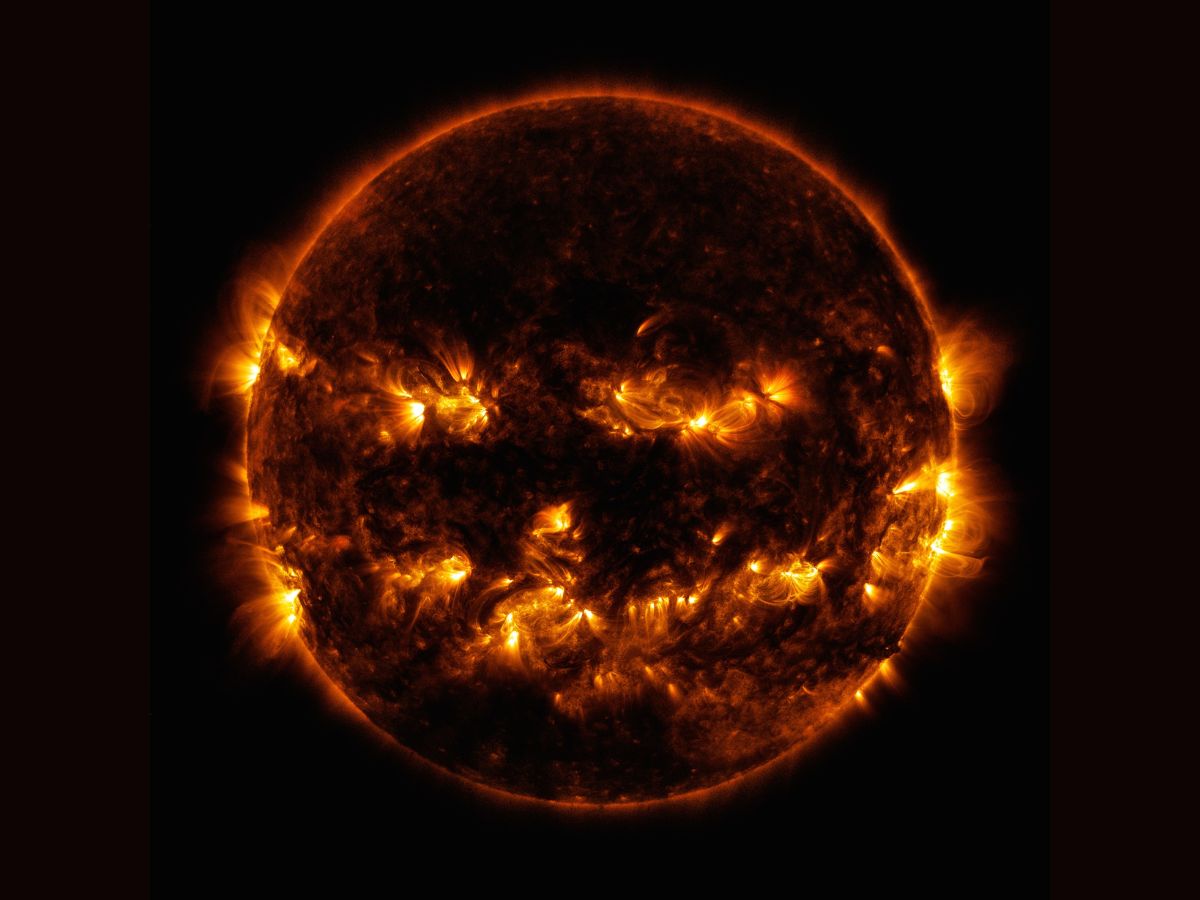Grinning Gourd: NASA's Spitzer Captures Jack-O'-Lantern Nebula Decorating Milky Way. See PIC
Spitzer Telescope, while observing the outer region of the Milky Way galaxy, captured an infrared image of a cloud of gas and dust that looks like hollowed-out pumpkins seen every Halloween.

NASA has been releasing several spooky, ghostly images of the cosmos as part of Halloween celebrations. The space agency recently shared an eerie image of a nebula captured by the Spitzer Space Telescope. The observatory, while observing the outer region of the Milky Way galaxy, captured an infrared image of a cloud of gas and dust that looks like hollowed-out pumpkins seen every Halloween. The cloud of gas and dust is a nebula, nicknamed the Jack-o'-Lantern Nebula. The image gives the appearance of a 'grinning gourd' decorating the Milky Way.
The nebula was likely created by powerful outflows of radiation and particles from a massive O-type star. An O-type star is a class that includes bluish white stars with surface temperatures of 25,000 to 50,000 Kelvin. These stars are about 15 to 20 times heavier than the Sun.

Spitzer's cold mission, which ran between 2004 and 2009, had collected the data which astronomers used to create the image of the grinning gourd.
Other ghostly pictures released by NASA include the James Webb Space Telescope's 'Haunting Portrait' of the Pillars of Creation and the Wide-Field Infrared Survey Explorer's (WISE's) image of the Witch Head Nebula, which appears like a witch screaming out into space.
The haunting portrait looks like an ethereal landscape of time-forgotten tombs and soot-tinged fingers reaching out. The pillars of gas and dust enshroud stars that are slowly forming over many millennia. Webb's image is an eerie, extremely dusty view of the Pillars of Creation in mid-infrared light.

Sharing the image of the Witch Head Nebula on social media, NASA 360 asked the world who would win the competition — Space Witch or Earth Witch?
In the image, a witch appears to be screaming out into space. The cosmic entity is known as the Witch Head Nebula because of its resemblance to a wicked witch. The image was captured in infrared light.

The billowy clouds of the nebula, where baby stars are brewing, are being lit up by massive stars, according to NASA. Starlight is hitting the dust in the cloud, causing it to glow with infrared light. WISE's detectors picked up this infrared light.
Estimated to be hundred light years away in the Orion Nebula, the Witch Head Nebula is just off the famous hunter's knee.
The European Southern Observatory (ESO) has released an image revealing the ghost of a gigantic star. The Very Large Telescope (VLT), hosted at the ESO's Paranal site in Chile, has captured a beautiful tapestry of colours showing the 'ghost' of a gigantic star. The 'ghostly' remains constitute the Vela supernova remnant. The image has the appearance of a spooky spider web, and also magical dragons and wispy trails of ghosts.
Earlier, NASA released an image of the Sun 'smiling back at Earth, which appears terrifying and funny at the same time.
The Sun is thought of as a fierce celestial body because of its enormous size and extremely high temperatures. But one might not think the same after seeing an image of the Sun 'smiling' back at Earth, captured by NASA's Solar Dynamics Observatory.

The observatory observed Earth's host star in ultraviolet light, and captured dark patches on it. These patches, known as coronal holes, are regions where fast solar winds are ejected from the Sun out into space.
Every year, the space agency shares the famous image of the 'Jack-O-Lantern Sun', captured by the Solar Dynamics Observatory. On October 8, 2014, the Solar Dynamics Observatory captured active regions on the Sun which combined to look similar to a jack-o-lantern's face.

The active regions in the 'Jack-o-Lantern Sun' appear brighter because those are areas that emit more light and energy, and are markers of an intense and complex set of magnetic fields hovering in the solar corona.
Related Video
Southern Rising Summit 2024: How Important is Self-Awareness? Insights from Anu Aacharya | ABP LIVE
Top Headlines






































